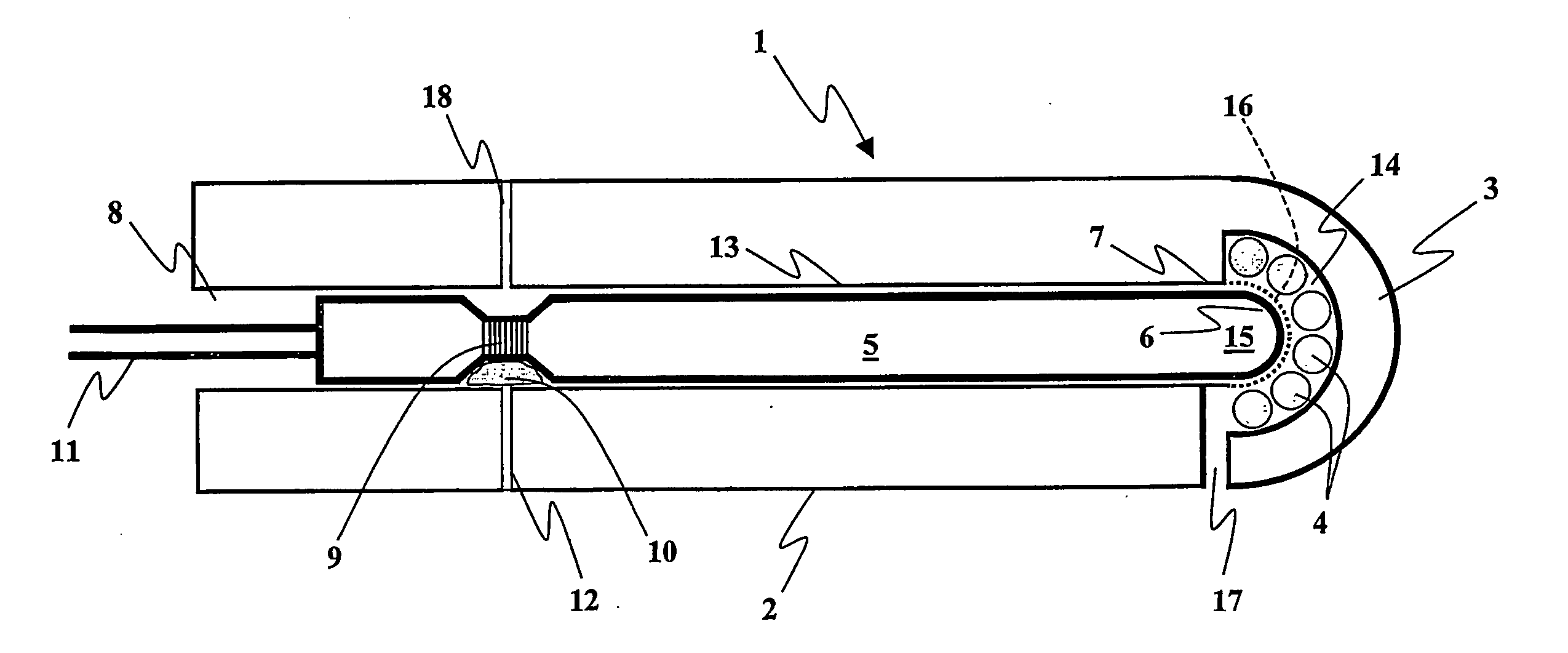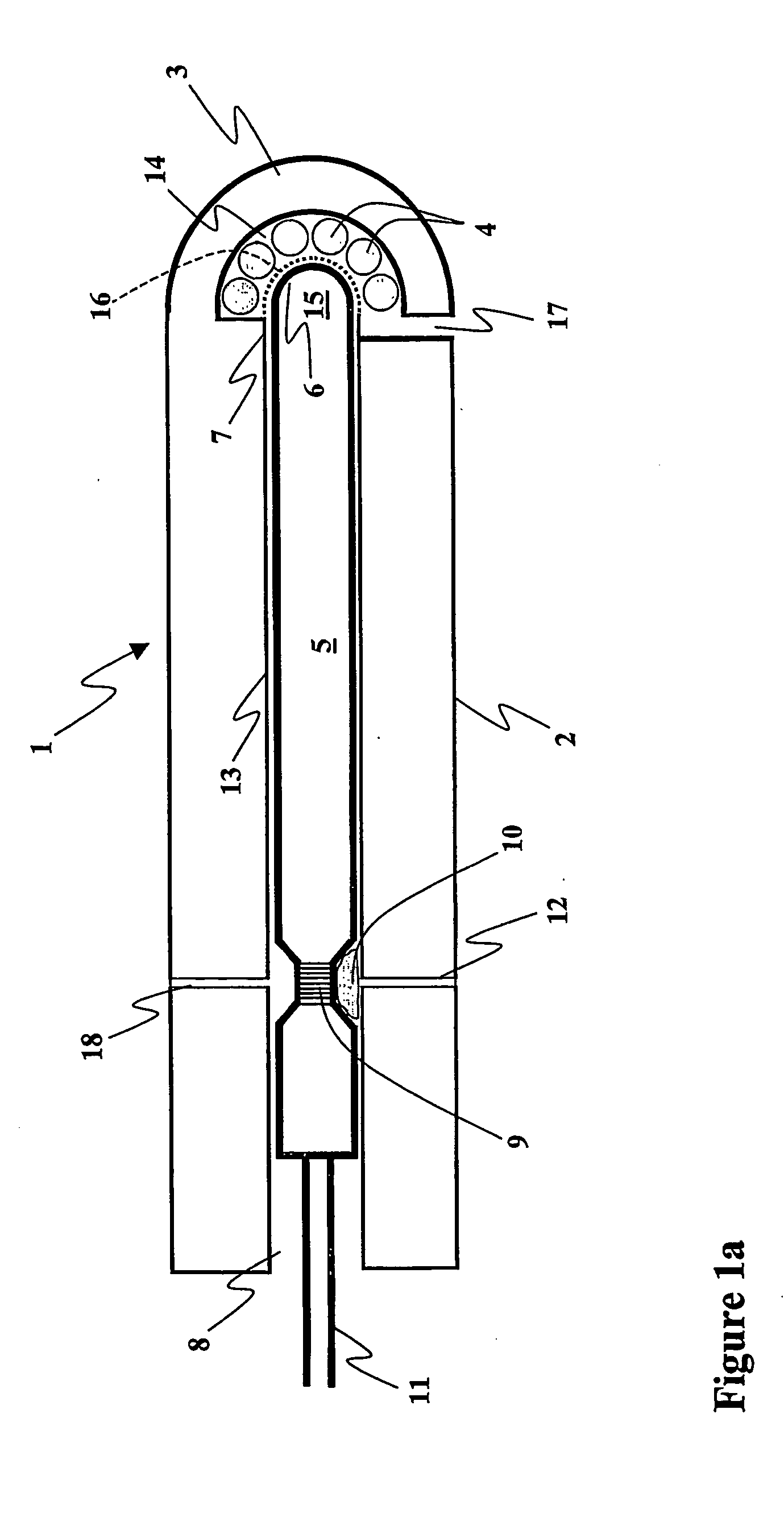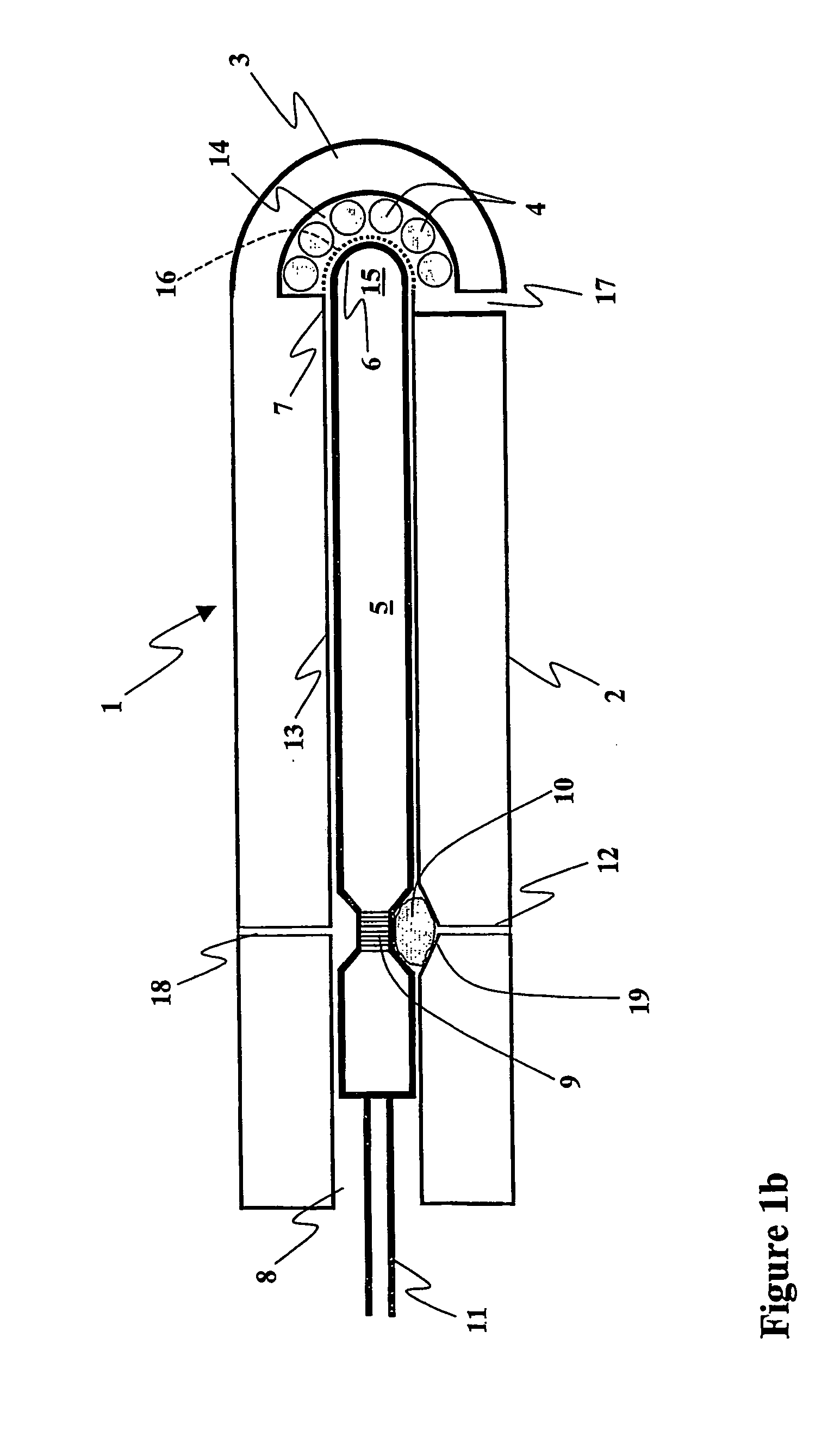Connector block for shock tubes and method of securing a detonator therein
- Summary
- Abstract
- Description
- Claims
- Application Information
AI Technical Summary
Benefits of technology
Problems solved by technology
Method used
Image
Examples
Embodiment Construction
[0036] Preferred embodiments of the present invention are described in the following with reference to the accompanying drawings.
[0037]FIG. 1a illustrates a first preferred embodiment of the present invention, wherein a body of material in the form of a settable locking material is injected into the connector block to secure a detonator positioned therein. The connector block 1 is shown in longitudinal cross-section. The connector block comprises a housing 2, preferably made of a plastics material, with a cylindrical bore 13 running longitudinally through the housing. The bore 13 has an open end 8 and a signal transmission end 7.
[0038] While the bore 13 of all of the illustrated embodiments is formed as a cylindrical through hole, it will be appreciated by persons skilled in the art that the bore may alternatively be an open-sided slot or trough. However, a bore having a cross-section that is identical to, or closely approximates, that of a detonator to be used in the device, will...
PUM
 Login to View More
Login to View More Abstract
Description
Claims
Application Information
 Login to View More
Login to View More - R&D
- Intellectual Property
- Life Sciences
- Materials
- Tech Scout
- Unparalleled Data Quality
- Higher Quality Content
- 60% Fewer Hallucinations
Browse by: Latest US Patents, China's latest patents, Technical Efficacy Thesaurus, Application Domain, Technology Topic, Popular Technical Reports.
© 2025 PatSnap. All rights reserved.Legal|Privacy policy|Modern Slavery Act Transparency Statement|Sitemap|About US| Contact US: help@patsnap.com



